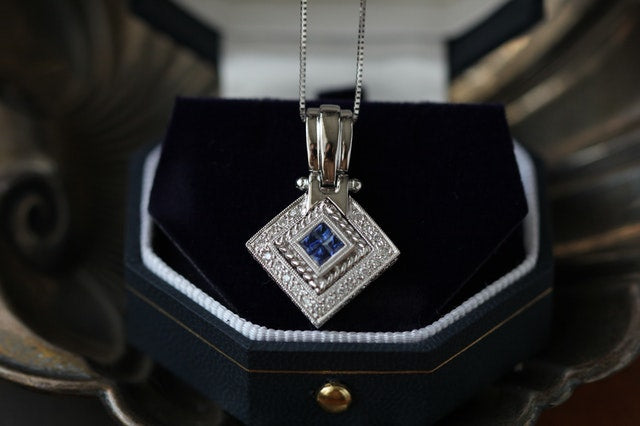Pink Stones. Pink stones are yielded by (1) corundum (pink sapphire), (2) spinel (balas ruby),
(3) tourmaline (rubellite), (4) genuine topaz (quite often misleadingly modified), (5) beryl
(morganite), (6) spodumene (kunzite), and (7) quartz (rose-quartz).
These pink minerals are not effortlessly separated by shading alone, as the profundity and nature of the
pink fluctuate enormously in various examples of similar mineral and in the various minerals. There
is dichroism in the instances of pink sapphire, pink tourmaline (solid), pink topaz (solid), pink
beryl (less articulated), and kunzite (exceptionally stamped and with a yellowish color in certain ways
that[94] appears differently in relation to the wonderful violet color toward another path in the gem). Pink quartz is
quite often smooth, and shows little dichroism. Pink spinel is without dichroism, being separately
refracting. Hardness and explicit gravity tests will best serve to recognize pink stones from
one another. The tone alone is anything but a protected guide.
Purple Stones. Among the mineral species that outfit purple stones, (1) quartz is pre-prominent
in the fineness of the purple tone. Such purple stones are, obviously, known as amethysts. After
quartz come (2) corundum (Oriental amethyst), (3) spinel (almandine spinel), (4) garnet
(almandine), and (5) spodumene (assortment kunzite).
The purple of the amethyst shifts from the palest colors to the full rich smooth grape-purple of the
alleged Siberian amethysts. The last are of a rosy purple (some of the time practically red) by
counterfeit light, yet of a fine violet by sunlight. No other purple stone approaches[95] them in
fineness of shading, so that here we have a genuine differentiation dependent on shading alone. In the event that the purple is
paler, notwithstanding, one can't make certain of the mineral by its tone. Purple corundum (Oriental
amethyst) is rarely as fine in shading as standard amethyst, and never as fine as the best amethyst.
It is normally of a redder purple, and by counterfeit light is practically ruby-like in its tone.
Purple spinels are separately refracting, and need dichroism, and subsequently need assortment of shading.
Almandine garnets additionally show no dichroism and need assortment of shading. The garnets are, when in doubt,
adept to be more thick in shading than the spinels.
Purple spodumene (kunzite) is pinkish to lilac in conceal—generally pale, except if in enormous masses,
furthermore, it shows extremely stamped dichroism. A yellowish cast of shading might be found in specific ways
in it additionally, which will help in distinctive it from other purple stones.
Earthy colored Stones. (1) Diamond, (2) garnet,[96] (3) tourmaline, and (4) zircon outfit the head
earthy colored stones.
Precious stone, when earthy colored, except if of a profound and satisfying shading, is truly bothersome, as it assimilates
much light, and seems filthy by sunshine and dim and sluggish by counterfeit light. When of a fine
brilliant earthy colored a jewel may have impressive worth as a "extravagant" stone. Such "brilliant likes"
can be recognized from other earthy colored stones (with the exception of maybe earthy colored zircons) by their
utterly unyielding brilliance, and their kaleidoscopic play or "fire."
Earthy colored garnet (hessonite or cinnamon stone), now and again wrongly called hyacinth in the exchange, is
of a profound ruddy earthy colored tone. Typically the inside structure, as seen under a focal point, is dirty,
having a kind of blended oil and water appearance.
Earthy colored tourmaline is some of the time satisfying in shading. It is somewhere down in conceal, less red than
cinnamon stone, and with checked dichroism,[97] which both earthy colored jewel and earthy colored garnet
need.
Earthy colored zircon, while lacking dichroism, is habitually rich and satisfying in conceal, and when well
cut is smart, the gloss being practically inflexible, the scattering being huge, and the
refractive file high. It is futile to reject that by the independent eye one may be deluded into
imagining that a fine earthy colored zircon was an earthy colored jewel. In any case, the huge twofold refraction of
the zircon effectively recognizes it from jewel (utilize the daylight card technique or search for the
multiplying of the edges of the back aspects as seen through the table). The relative delicate quality (71⁄2)
likewise effectively separates it from precious stone.
Dismal Stones. Hardly any dry stones other than jewel, white sapphire (mainly logical),
also, quartz are found in the exchange. Dreary genuine topaz is at times sold and falsely brightened
zircon (jargoon) is additionally every so often met with. Beryl of light green tint[98] or even altogether
dismal may likewise be seen on occasion.
Such dismal stones should obviously be recognized by properties other than shading. They are
referenced here simply that the student might know about what assortments of diamond minerals happen in
the dreary condition, and that every one of these minerals additionally happen with shading in their more regular
structures. This doesn't aside from the jewel, which is once in a while genuinely dry.

